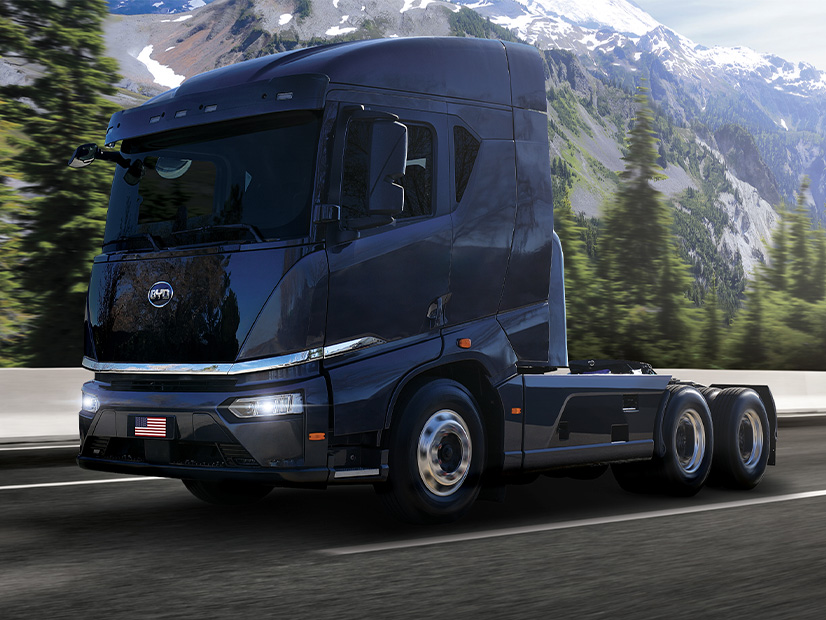
Vermont is preparing to adopt four California vehicle emissions standards this year, three of which will be the state’s first substantive regulations for heavy-duty vehicles.
The Agency of Natural Resources (ANR) will file proposed rules with the Agency of Administration next month for Advanced Clean Cars II, Advanced Clean Trucks, Low Nitrogen Oxides Heavy-duty Omnibus and Phase 2 GHG Emissions Standards for Heavy-Duty Trucks and Trailers.
“Adopting the [truck rules] will be a significant build on our existing program in terms of adding regulations that address heavy-duty vehicles more robustly,” said Megan O’Toole, climate change mitigation coordinator at the ANR’s Department of Environmental Conservation.
To comply with the 2020 Global Warming Solutions Act, ANR must file the proposed rules, as recommended by the Vermont Climate Council in its initial Climate Action Plan, by July 1. The state first adopted California air emissions standards in the 1990s and has expanded those regulations over the years.
“If all of the vehicles that will be delivered to the State of Vermont, pursuant to these rules, are bought by Vermonters and fleet owners in Vermont and placed in service, that will get about a third of the way to our 2030 goal just for the transportation sector,” O’Toole said during a Climate Council meeting Monday.
Under the GWSA, transportation sector emissions must decline by 1.38 million metric tons of carbon dioxide equivalent by 2030.
Advanced Clean Cars II will amend ACC I, which Vermont adopted previously, to ensure that all passenger and light-duty vehicles sold in the state are zero-emission by 2035. The standard ramps up over time, starting with model year 2026.
Under Advanced Clean Trucks, at least 30% of medium- and heavy-duty vehicles delivered to the state must be zero-emission by 2030, starting with model year 2026 and ramping up to 40% or higher by 2035, depending on vehicle class.
Phase 2 GHG standards, which build on Phase 1 standards, are the first to cover certain trailers used with heavy-duty tractors and are based on technology requirements for manufacturers to reduce fuel consumption and emissions. The requirements will be effective starting with model year 2026. Low NOx, Heavy-duty Omnibus is a required companion standard to the Phase 2 program that does not relate directly to greenhouse gases. The California Air Resources Board expects the regulation to establish NOx emission standards that are 90% lower than today, effective for model year 2026.
ANR plans to have all four rules adopted by the end of the year so they will be effective for the 2026 model year, O’Toole said. The agency will hold rulemaking hearings in the late summer and early fall.
Climate Planning
While early Climate Council analyses showed significant GHG emission reductions can come from adopting the California regulations, ANR has not released final emissions data in its draft rules. The reductions could equate to 10% of the overall GWSA target of a 40% reduction below 1990 levels in 2030, Jared Duval, council member and executive director of the Energy Action Network, said during the meeting
Vermont also must reduce its GHG emissions 26% below 2005 levels by 2025 and 80% below 1990 levels by 2050.
As it stands, adopting the California regulations is the only action moving forward this year from the climate action plan that can achieve “double-digit” reductions, Duval said. The council had expected to recommend Vermont join the Transportation and Climate Initiative Program (TCI-P) last year, but that program has since stalled, leaving a significant gap in the transportation sector emissions reductions needed in the climate plan.
The state also is not moving forward this year with a climate plan recommendation for the state to adopt a clean heat standard to reduce emissions in the building sector. Earlier this month, Gov. Phil Scott vetoed a bill that would have directed regulators to develop a CHS. (See Vt. House Sustains Veto of Clean Heat Standard Bill.) Transportation and buildings are Vermont’s No. 1 and 2 top emitting sectors, respectively.
The climate plan “was already on thin ice with TCI-P not moving forward,” Duval said. “Without the clean heat standard, which we were counting on to be the largest single emissions-reduction measure in the plan, I don’t see how we can have any confidence that we will come anywhere close to the 2030 requirements.”
In vetoing the clean heat standard bill on May 6, Scott pointed to his $216 million climate-related budget package as evidence that he understands the importance of reducing GHG emissions. That budget, which the legislature amended and passed before adjourning last week, is a “short-term opportunity” to use federal and state funding to reduce Vermonters’ dependence on fossil fuels,” Duval said.
“It may help us meet the 2025 target, but it will likely be going away at exactly the time that we need to be ramping up significantly to have any chance, any hope, of meeting the 2030 requirements,” he said.
As passed, the state budget includes $80 million for weatherization, but Duval said that will only help an estimated 8,000 of the 90,000 homes the climate plan recommended for building sector emission reductions by 2030. And an additional $12 million for electric vehicle purchase incentives would put an estimate 3,000-4,000 EVs on the road of the 126,000 needed for transportation sector reductions by 2030, Duval said.
Short-term investments must be backed up by long-term policy and market clarity and the incentives residents need to make changes, according to Duval.
“We can’t keep pretending that we live in a pre-Solutions Act world, where it’s okay to be off track of the legal requirements without any serious, feasible plan to meet these requirements,” he said.

